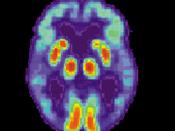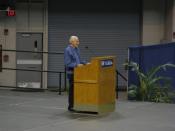Euthanasia: Whose Choice Is It?
Most people in North America die what may be called a bad death. One study
found that, "More often than not, patients died in pain, their desires concerning
treatment neglected, after spending 10 days or more in an intensive care unit."
(Introduction 1)
Is a painful death a natural and acceptable fact of life? It is my belief that a
person with a terminal disease enduring uncontrollable pain who has the desire to
end their life should be able to do so. Unfortunately, many groups and government
agencies have taken it upon themselves to block a patient's access to an early death via a
lethal dose of prescription drugs from their own physician. This leaves many ill people
desiring to end their lives no choice but to wait until the disease kills them in it's slow,
painful and debilitating way.
The word euthanasia originated from the Greek language: eu means "good" and
thanatos means "death".
One meaning given to the word is "the intentional termination
of life by another at the explicit request of the person who dies." (Introduction 1)
One type of euthanasia is called passive euthanasia. Passive euthanasia is when a
patient doesn't have a hand in their own death. Examples of passive euthanasia include
the action of when a patient's ventilator is turned off, food and water are no longer given
to the patient or a DNR (do not resuscitate) order is given. These actions are usually
spelled out in a patient's living will or requested by family members if the patient is in a
vegetative state. A living will expresses your wishes regarding medical care in the event
you become unable to express them yourself.
Another type of euthanasia is called active euthanasia. Active euthanasia occurs when
a patient's life is...


